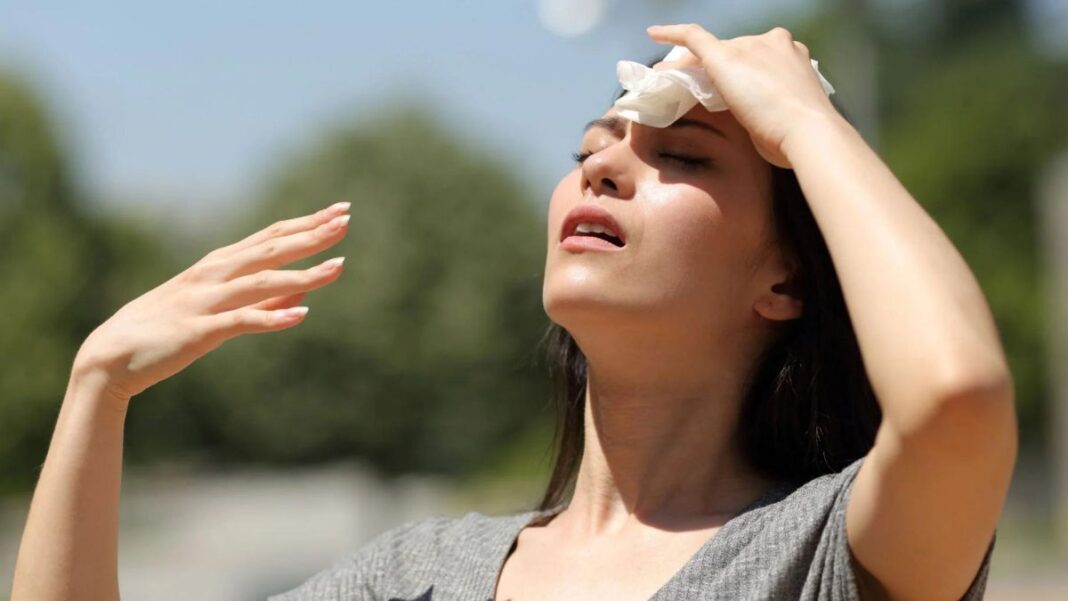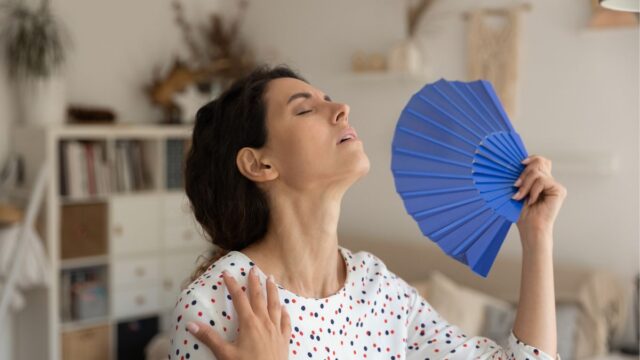Heat stroke occurs as a result of hot, humid and unbearable weather conditions when the body temperature rises beyond 40°Celsius or 104°Fahrenheit. It can manifest through varied symptoms like seizures, confusion, and unconsciousness among others. It might become a life-threatening condition, resulting in coma or death, if left untreated.
Now that you’ve understood heat stroke meaning, let’s deep dive into discussing the symptoms, causes, risk factors, treatment options, and preventive tips.
6 Possible Heat Stroke Causes That You Should Be Aware Of
Some of the possible heat stroke causes are as below:
1. Extreme Humid Weather Conditions
An unbearably hot and humid environment may result in sunstroke when the body temperature rises beyond 40°Celsius or 104°Fahrenheit. Especially for prolonged periods of time. This type of heat stroke, known as non-exertional (classic) heatstroke, typically results in people with chronic illnesses and older adults.
2. Strenuous Activities
An exertional heat stroke can happen due to an increase in core body temperature as a result of intense physical activities in hot weather conditions. This is most common among people who are not used to high temperatures, but it can occur to anyone exercising in hot weather conditions.
3. Alcohol Consumption
Not being able to regulate body temperature after drinking alcohol may result in a stroke.
4. Dehydration
Not replenishing your body with water content lost through dehydration is another factor that may lead to a heat stroke.
5. Wearing Excess Clothes During Humid Weather
Wearing too many layers of clothes or outfits of thick materials will prevent your perspiration from evaporating easily, which is necessary to cool your body down, leading to a stroke.
6. Lack Of Air Conditioning
In unbearably hot weather conditions, fans might not be enough to help your body perspire and, hence, cool down your body temperature.
4 Risk Factors Of Sun Stroke
1. Age
Your central nervous system dictates whether you can bear extreme heat conditions. The central nervous system is not sufficiently developed among young adults, unlike it is among people over 65 when the nervous system deteriorates. This makes your body not as capable of coping with extreme heat as effectively as it is among young adults. However, what is common to both is that everyone needs to keep themselves hydrated to prevent sunstroke.
2. Sudden Exposure To Hot Weather Conditions
A sudden rise of temperatures during seasonal changes or while travelling to a hotter climate may make you susceptible to a stroke and other heat-related health conditions.
3. Certain Medications
Some meditations reduce your body’s ability to remain hydrated. This might happen specifically in the case of medications that narrow your blood vessels, eliminate water and sodium from your body, block adrenaline, or reduce psychiatric symptoms. Stimulants for ADHD (attention-deficit/hyperactivity disorder) may also increase your vulnerability to heat stroke.
4. Certain Health Conditions
Certain chronic health conditions like lung and heart diseases may raise the risk of heat stroke. Hence, a history of medical conditions like obesity, previous heat strokes, and a sedentary lifestyle may increase the risk as well.
16 Critical Signs Of Heat Stroke / Sun Stroke
Symptoms of a heat stroke often resemble that of a heart attack and similar other medical conditions. At times, one may experience signs of heat exhaustion before the condition proceeds to a stroke. Some of the possible heat stroke symptoms are as follows:
- Headache
- Dizziness
- Weakness
- Muscle cramps
- Nausea
- Vomiting
- Unexplained rising of body temperature
- Rising pulse
- Difficulty in breathing
- Lack of sweating, accompanied by flushed dry skin
- Cold, clammy skin
- Disorientation
- Hallucinations
- Confusion
- Seizures
- Coma, in extreme cases
7 Effective Home Remedies For Heat Stroke (Sun Stroke)
- Drink water, and fresh juices and vegetables at regular intervals to replenish your body with the water that it needs to stay hydrated. Better still, drink salted lemon water with a dash of sugar which is a natural remedy for keeping blood sugar levels in check.
- Steer clear of diuretic beverages like coffee and tea that make you want to pee often, thus, leading to dehydration.
- Invest in sunblock curtains that keep the harmful UV rays at bay. Keep your home shaded as much as you can.
- Switch on the air conditioner, if you have one, when the temperature soars beyond bearable limits.
- Apply ice packs to your armpits, neck, and groin.
- Take showers often.
- Wear light-coloured, cotton clothes.
5 Heat Stroke First-Aid Hacks To Administer On An Individual
Here’s what you can do if someone around you is having sunstroke:
- Have him/her lie down in a shaded area that is well-ventilated.
- Spritz cold water or offer a cold compress to reduce his/her body temperature.
- Loosen the clothes around his/her neck, to make it easier for him/her to breathe.
- Keep a close tab on his/her breathing to remove air blockages, if any, and speed up his/her heat stroke recovery.
- Take him/her to the nearest hospital immediately, after giving him/her basic first-aid.
Side-Effects Of Heat Stroke
1. Organ Damage
Heat exhaustion may lead to the inflammation of your brain or other internal organs, leading to the possibility of permanent damage.
2. Death
Without immediate treatment by healthcare professionals, the symptoms of a heat stroke may lead to a heat stroke soon.
7 Heat Stroke Prevention Measures That Can Come Handy
Below are 7 heat stroke prevention tips you must be aware of.
- First of all, don’t crowd around an individual who is possibly suffering from a heat stroke. If you’ve fully understood heat stroke meaning, you will realise that the concerned individual needs breathing space to prevent the condition from getting aggravated.
- Stay indoors, especially during the afternoons, when the temperature is soaring outside.
- Try fitting in your fitness schedule early in the morning or after dusk, so you don’t physically exert yourself during hot and humid weather conditions.
- Drink water and fresh juices at frequent intervals to prevent dehydration, but keep the intake of diuretic beverages like coffee, tea, and alcohol to a minimum. It’s advisable that you carry a bottle of water if you’re outside.
- Wear loose, light-fitted clothes of breathable materials like cotton. Synthetic materials are a strict no-no.
- Never leave children and pets unattended in a locked car, so there’s no scope for them to experience heat exhaustion.
- Don’t miss out on lathering up on a broad-spectrum sunscreen or sunblock of at least SPF 30 even when you’re indoors. Applying it every 2 hours to keep the chances of getting a suntan to a minimum.
- Wear a hat, cap, or scarf, or carry an umbrella before stepping outside.
Follow the above prevention hacks, so you don’t reach a stage where you need to administer heat stroke treatment at home.
Heat Stroke Treatment: When To See A Doctor?
Be quick and steady in following the first-aid tips discussed earlier in the article for heat stroke treatment at home and then rush him/her to the nearest hospital for necessary heat stroke treatment.
Heart strokes aren’t common unless you have been out in the sun for long, have been doing physically strenuous activities, are an elderly citizen, or have a history of heart stroke. Nonetheless, you should plan your day consciously so as not to expose yourself to hot and humid weather conditions. And be aware of the common heat stroke symptoms to help someone who might be suffering from a heat stroke.
Open up like never before and participate in conversations about beauty, entrepreneurship, mental health, menstrual & sexual health, and more. Desi women, join our community NOW!



